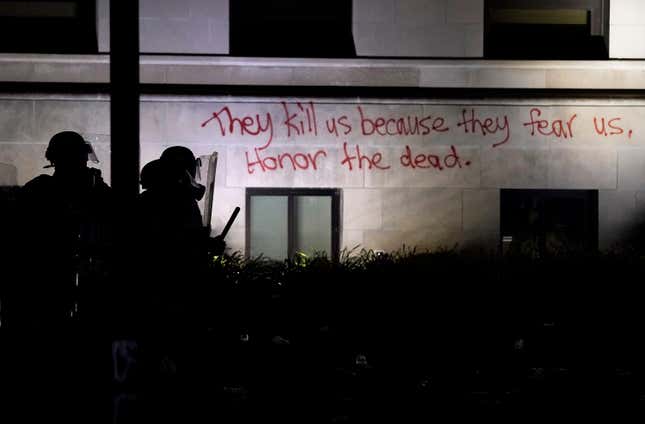
There are certain figures that, for one reason or another, get seared in your brain.
For instance: 53 percent, the number of white women who voted for Trump. Or 1619, the year that the first slave ships arrived in the United States. 8 minutes and 46 seconds: the length of time former Minneapolis police officer Derek Chauvin knelt on George Floyd’s neck.
Here’s a simple one to commit to memory: 3. The number of days that the U.S. has gone without a police killing since Floyd died.
That statistic comes our way via a tweet from activist and data and policy analyst Samuel Sinyangwe, who pulled data from Mapping Police Violence, a project he co-founded that tracks the number of shootings by police across the country.
Further, as of Aug. 24, American police had killed 751 people total—that’s an average of more than three people per day, despite the fact that shelter-in-place mandates were passed in many parts of the country during the spring, meaning there were, ostensibly, less people on the streets to police.
This is the figure to keep in mind as, once again, parts of the nation are literally burning after another egregious example of state violence. It’s worth emphasizing here that Jacob Blake, who is currently partially paralyzed after being shot in the back multiple times by Kenosha police officers, would not be included in that number, since he survived the shooting. Floyd may not even be included, since he wasn’t killed by a gun, but by an excessive and brutal form of a “hold.”
And here’s the thing. You can quantify shootings. You can quantify killings. And we should. It should be common knowledge, easily searchable for anyone curious about how the people charged with protecting them are doing their job.
But what you cannot quantify—though we can certainly attempt to—is damage. And that’s what is on the other side of the number 3, or the number 751. Ripples and waves of damage, crossing over communities and counties and shores, touching generations of families, destabilizing homes and neighborhoods. This is why those 3 days matter. This is the story that 3 days tells us.

